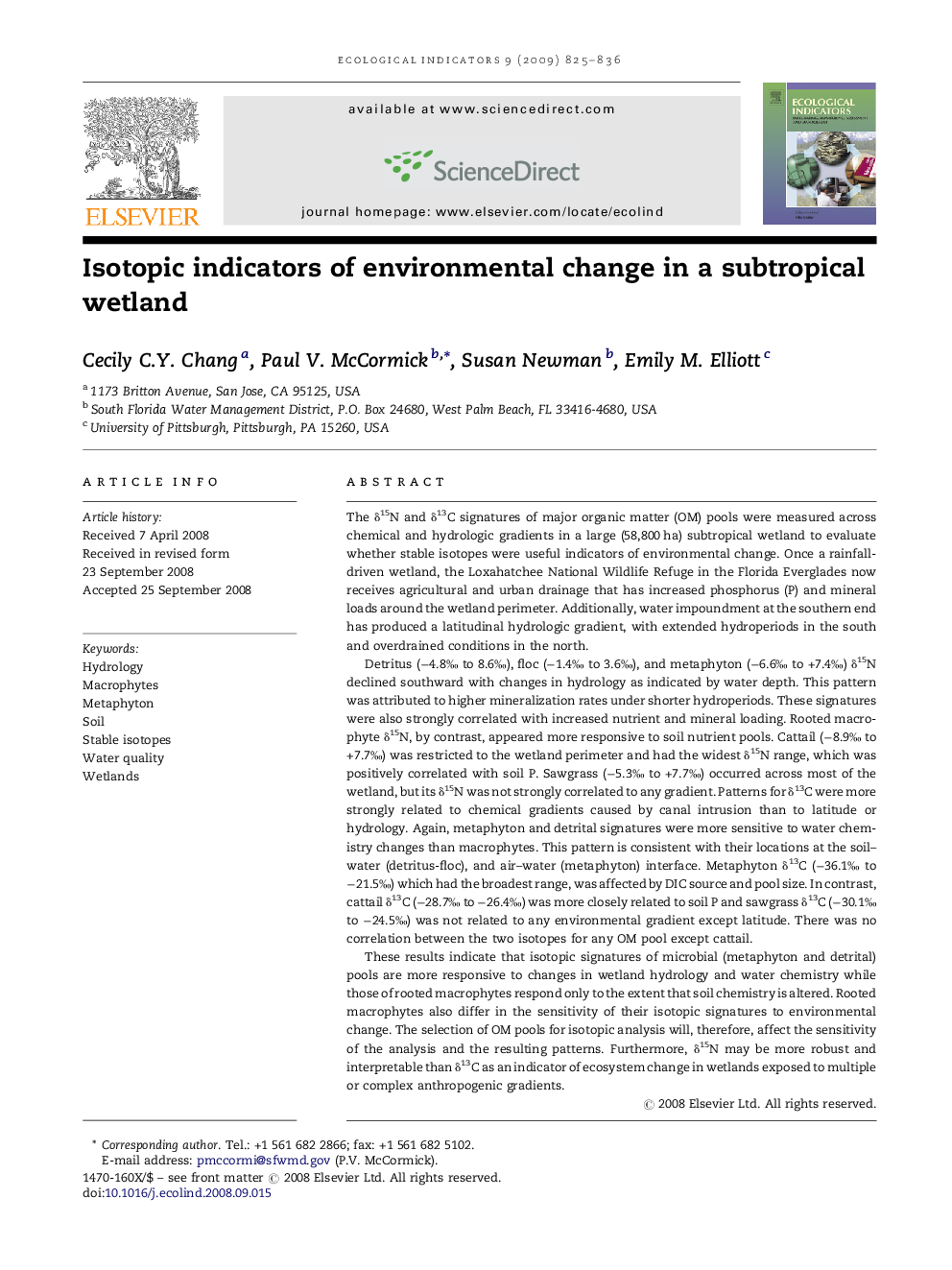| Article ID | Journal | Published Year | Pages | File Type |
|---|---|---|---|---|
| 4374507 | Ecological Indicators | 2009 | 12 Pages |
The δ15N and δ13C signatures of major organic matter (OM) pools were measured across chemical and hydrologic gradients in a large (58,800 ha) subtropical wetland to evaluate whether stable isotopes were useful indicators of environmental change. Once a rainfall-driven wetland, the Loxahatchee National Wildlife Refuge in the Florida Everglades now receives agricultural and urban drainage that has increased phosphorus (P) and mineral loads around the wetland perimeter. Additionally, water impoundment at the southern end has produced a latitudinal hydrologic gradient, with extended hydroperiods in the south and overdrained conditions in the north.Detritus (−4.8‰ to 8.6‰), floc (−1.4‰ to 3.6‰), and metaphyton (−6.6‰ to +7.4‰) δ15N declined southward with changes in hydrology as indicated by water depth. This pattern was attributed to higher mineralization rates under shorter hydroperiods. These signatures were also strongly correlated with increased nutrient and mineral loading. Rooted macrophyte δ15N, by contrast, appeared more responsive to soil nutrient pools. Cattail (−8.9‰ to +7.7‰) was restricted to the wetland perimeter and had the widest δ15N range, which was positively correlated with soil P. Sawgrass (−5.3‰ to +7.7‰) occurred across most of the wetland, but its δ15N was not strongly correlated to any gradient. Patterns for δ13C were more strongly related to chemical gradients caused by canal intrusion than to latitude or hydrology. Again, metaphyton and detrital signatures were more sensitive to water chemistry changes than macrophytes. This pattern is consistent with their locations at the soil–water (detritus-floc), and air–water (metaphyton) interface. Metaphyton δ13C (−36.1‰ to −21.5‰) which had the broadest range, was affected by DIC source and pool size. In contrast, cattail δ13C (−28.7‰ to −26.4‰) was more closely related to soil P and sawgrass δ13C (−30.1‰ to −24.5‰) was not related to any environmental gradient except latitude. There was no correlation between the two isotopes for any OM pool except cattail.These results indicate that isotopic signatures of microbial (metaphyton and detrital) pools are more responsive to changes in wetland hydrology and water chemistry while those of rooted macrophytes respond only to the extent that soil chemistry is altered. Rooted macrophytes also differ in the sensitivity of their isotopic signatures to environmental change. The selection of OM pools for isotopic analysis will, therefore, affect the sensitivity of the analysis and the resulting patterns. Furthermore, δ15N may be more robust and interpretable than δ13C as an indicator of ecosystem change in wetlands exposed to multiple or complex anthropogenic gradients.
